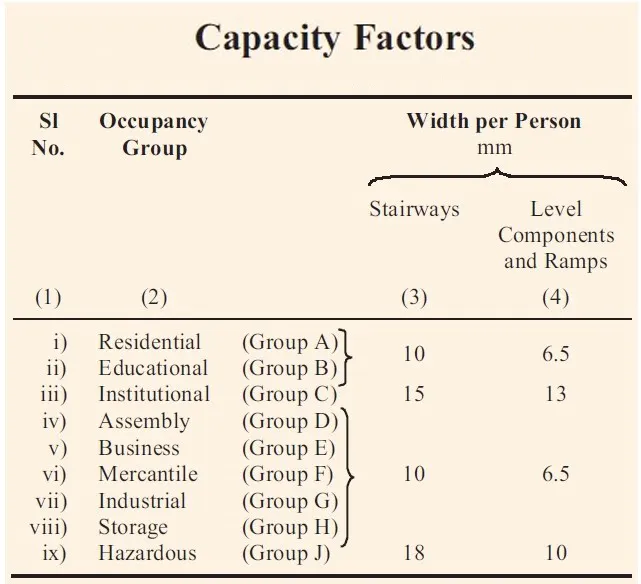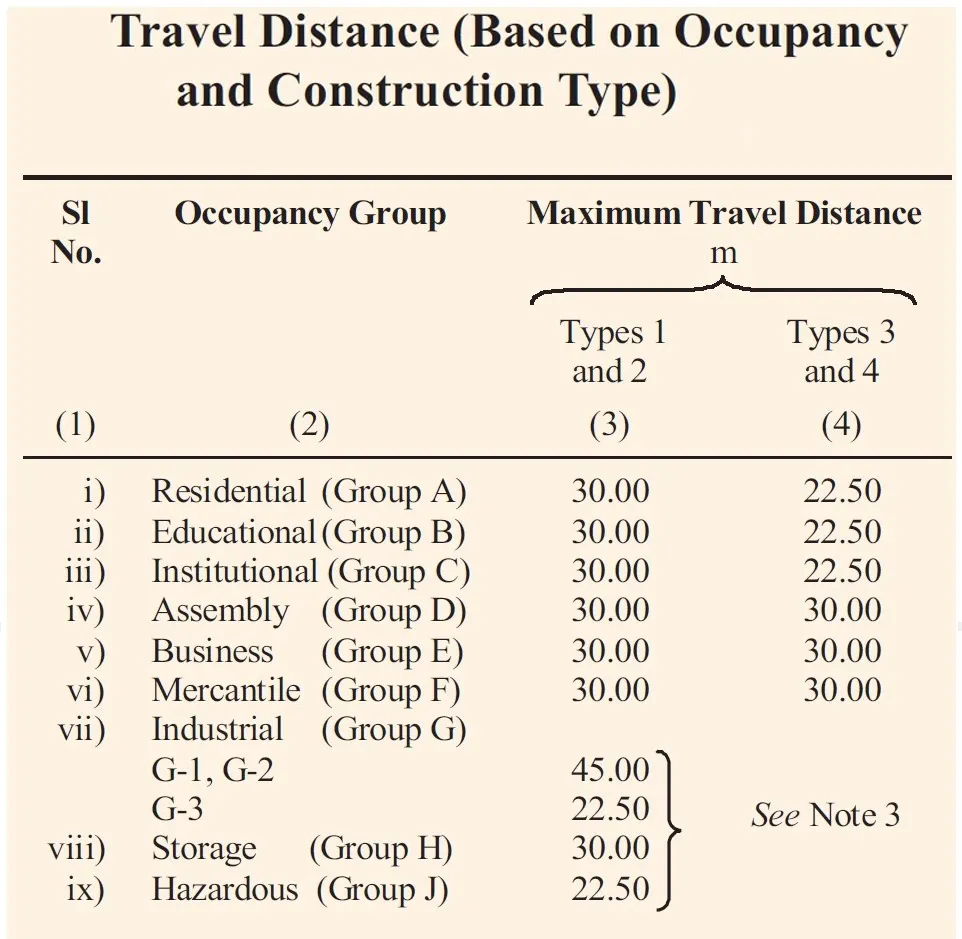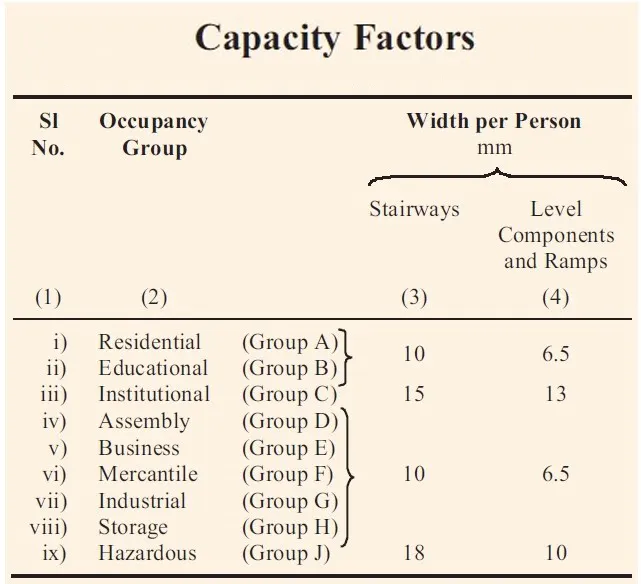If you want to know about the smoke movement in building or about the lift and their components or fire-fighting in multistory developments, please click the link.
The number of exits required in a building depends on various factors such as the occupancy type, the size of the building, the number of floors, and the distance between the exits. In general, the purpose of exits is to provide a safe and efficient means of egress in case of an emergency.
1) Number of exits
The minimum required number of exits in a building shall be determined based on occupant load (see Table below) and width required per person (see Table below) as appropriate to the type of exit for respective occupancies, subject to complying with maximum travel distance requirement (see Table below).

Notes
- Gross area shall be the floor area as defined in 2.35. All factors expressed are in gross area unless marked net.
- Occupant load in dormitory portions of homes for the aged, orphanages, insane asylums, etc., where sleeping accommodation is provided, shall be calculated at not less than 7.5 m2 gross floor area/person.
- These shall include gymnasium, table tennis room, billiard room and other gaming rooms, library, swimming pool and like.
- In case of assembly occupancy having fixed seats, the occupant load shall be determined by multiplying the number of seats by 1.2.
- Car parking areas under occupancy other than storage shall also be 30 m2 per person.


Notes
- For fully sprinklered building, the travel distance may be increased by 50 percent of the values specified
- Ramp shall not be counted as an exit in case of basements below the first basement in car parking.
- Construction of Type 3 or Type 4 is not permitted.
2) Arrangement of exits
- Exits shall be so located that the travel distance on the floor shall not exceed the distance given in Table – Travel Distance (Based on Occupancy and Construction Type).
- Travel distance shall be measured from the most remote point within a storey or a mezzanine floor along the natural and un-obstructed path of horizontal or vertical egress travel to the door to an exit.
- The dead-end corridor length in exit access shall not exceed 6 m for educational, institutional and assembly occupancies. For other occupancies, the same shall be 15 m (see Figure below)

- Exits shall be placed as remote from each other as possible and shall be arranged to provide direct access in separate directions from any point in the area served.
3) Capacities of means of egress
- Exit capacity is the number of people that can pass through a stairway, and level components (door and corridor) and ramps. The total capacity of all the respective means of egress serving a floor shall be sufficient to allow egress of the entire population of the floor.
- The unit of exit width, used to measure the capacity of any exit, shall be 500 mm. A clear width of 250 mm shall be counted as an additional half unit. Clear widths less than 250 mm shall not be counted for exit width.
- Width per person for stairways, and level components and ramps shall be determined using the capacity factors in accordance with Table below.

For example, if an exit doorway measures 1000 mm in clear width, it would be defined as providing exit capacity for 1000/6.5 occupants, that is, 153 persons (say 150 persons) and number of such exit doorways can then be calculated depending on the occupant load.
- When calculating stairways, level components and ramps and other exit means, the capacity of the entire system shall have to be based upon the minimum capacity available from any part of the system.
- The corridor, if so, provided shall also to be planned with consideration of exit access adequacy for the number of occupants. Further, consider the situation of doors opening to an exit stairway.
- If the stairway provides an exit capacity of 150 persons, and the doors leading into the stairway provide an exit capacity of 153 persons, the overall exit system would be considered to provide the minimum exit capacity of only 150 persons afforded by the stairway.
- The exit planning will be limited by the most restrictive exit calculation under the means of egress.
- In the procedures for determining required egress capacity, the number of required means of egress is based on a floor-by-floor consideration, rather than the accumulation of the occupant loads of all the floors.
- However, the number of means of egress cannot decrease as an occupant proceeds along the egress path.
In addition to the NBC guidelines, local building codes and regulations may have additional requirements for exits beyond those specified by the NBC. It is essential to consult with the relevant authorities and professionals to ensure that the building meets the requirements of all applicable codes and regulations.